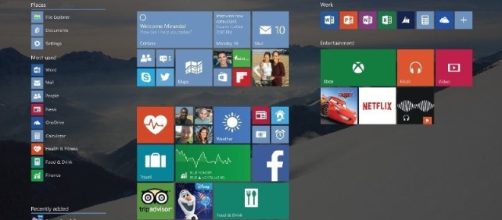Microsoft prides itself on trying to be among the first to implement some of the latest advances in computer tech, especially for their devices or operating systems. That is why they have been steadily hyping the impending arrival of the Fall Creators Update for Windows 10. While some features that have been deemed old might be removed, as in the case of the increasingly retro MS Paint program, more new stuff is expected to take their spots in the upgrades. This Tuesday, Microsoft had announced yet a new nifty feature for Win-10 users to dabble with, one that could provide greater accessibility if proven successful: eye-tracking interface control.
Operating with eye movements
This new accessibility gimmick was shown off at the latest Windows Insider Preview Build, a feature that would be compatible with a particular eye-tracking hardware device. The Tobii Eye Tracker 4C can lock on to the eyes of a computer user and translate it into a movement and input command on the screen. Working in conjunction with Microsoft’s Eye Control beta version, a Windows 10 user can “lock on” with their eyes at a portion of the desktop display like an icon or a menu, and then manipulate the selected objects such as opening programs, selecting menu choices, or “typing” letters on a screen keyboard.
Developing such esoteric means of control and input has been a driving force for Microsoft in the expansion of their accessibility options for every succeeding version of the Windows OS.
Their efforts have long been of great help to an ever-increasing variety of physically limited people to operate computers without the use of their hands. The Eye Control feature now being developed for Windows 10 is perhaps one of the most extensive alternative accessibility control systems yet, capable of great possibilities in aiding those with debilitating conditions like ALS to compute and surf by themselves.
Smart assistance
An example of how Microsoft’s Eye Control for Windows 10 works is the manipulation of desktop objects. With a user’s eye motions being scanned by the Tobii Eye Tracker, they can focus on an icon in the startup menu (the location of the eye’s focus is indicated by a circle).
Once the icon is locked in, Eye Control displays a set of commands (left/right click, close, etc.) which can then be selected by shifting the eye’s focus. When utilizing the Windows touchscreen keyboard, a user with Eye Control can skim through the letters of a word and have them form up.
Once Microsoft has worked out the kinks to their Eye Control feature for Windows 10, they plan to expand their compatibility across Tobii’s whole line of eye-tracker devices, with other developers to be fitted in sometime in future updates.


